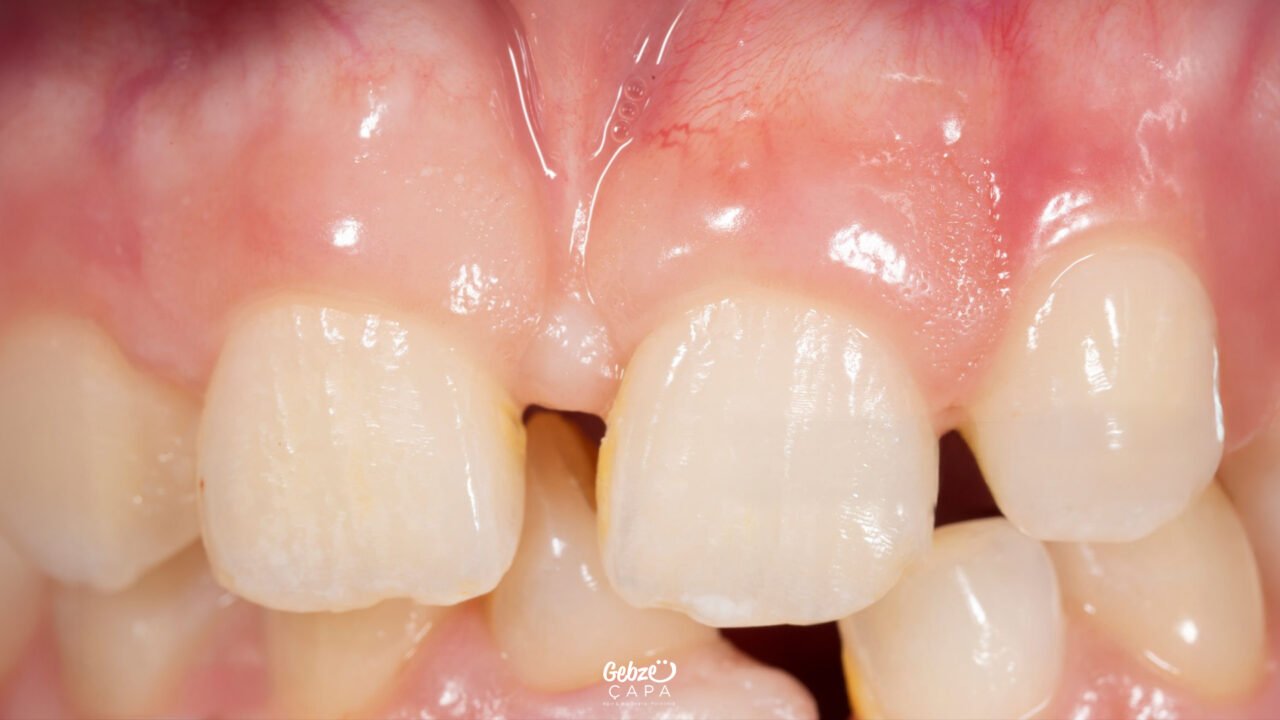What is Frenectomy?
Our mouth is a much more complex world than we realize. We talk, laugh, eat, and drink hundreds of times a day without even realizing it… but behind all this lies muscles, tissues, and ligaments working in perfect harmony. This small but impressive part of our body is like a symphony, with every instrument in the orchestra joining in at just the right moment. However, sometimes, even a tiny tissue can disrupt the balance within this perfect harmony.
One of those tissues is the “frenulum,” or more commonly known as a “tongue tie” or “lip tie.” This small tissue, which normally functions harmlessly, can sometimes make it difficult to speak, laugh, and even eat comfortably. Sometimes it can be short or tense at birth, and sometimes it becomes noticeable later. That’s when a tiny part can become a problem affecting our entire oral health.
This problem caused by the frenulum can be both physically and aesthetically distressing. It can cause speech problems in some children, and in some adults, it can cause visual problems such as a gap between the teeth (diastema). Fortunately, medicine offers a simple yet effective solution: frenectomy. The surgical removal of the excess or tight connective tissue.
What is a Frenulum?
Before discussing what frenectomy is, it’s important to understand what we’re dealing with. The structure we call a “frenulum,” more commonly known as a tongue tie or lip tie, is a thin piece of tissue, but its function is greater than we think. It keeps the movement of our tongue and lips within a certain range, thus maintaining the natural balance within our mouth.
Everyone actually has a frenulum, and this is completely normal. But sometimes this tiny tissue can be a bit “overworked.” That is, it can be shorter, thicker, or attached in the wrong place. In such cases, minor but annoying problems can occur that affect our daily lives. For example, children may experience speech delays, difficulty pronouncing certain words, babies may have difficulty breastfeeding, and adults may experience gaps between their teeth, a feeling of recession, or a deterioration in the aesthetics of their smile.

What is a Frenectomy?
A frenectomy is a very simple procedure, but it can significantly impact quality of life. In short, if the frenulum (lip tie) is too short, tight, or in an uncomfortable position, it is surgically cut and loosened.
This means that the small piece of tissue causing the problem is gently trimmed, allowing movement of the tongue, lips, or cheeks to be facilitated. It may seem like a minor procedure at first, but it can make a significant difference in speech development, breastfeeding, and even tooth alignment. Sometimes, a simple touch can provide significant relief, both functionally and aesthetically.
How Is a Frenectomy Performed?
A frenectomy procedure isn’t as scary or complicated as many people think. It’s actually a relatively short and simple procedure, but the results can make a significant difference in both comfort and oral health.
The procedure is usually performed under local anesthesia, meaning only the area to be treated is numbed, so you won’t feel any pain and will be completely comfortable during the procedure. The procedure usually lasts only 5 to 15 minutes. This means it’s not a long or difficult process; it can be completed in a short appointment.
Several different methods can be used during a frenectomy:
- Classic surgical method: In this method, the frenulum is cut with a surgical blade (scalpel). If necessary, the procedure is completed with very small stitches. Despite its simplicity, it provides effective results.
- Laser frenectomy: This is one of the most preferred methods today. Because a laser is used, there is minimal bleeding during the procedure, and recovery is quite rapid. Many patients can return to normal eating and speaking within a few days.
- Electrocautery: The frenulum is cut with an electrically operated device. This method controls bleeding and is quite safe.
Your dentist or oral and maxillofacial surgeon will determine which method is most suitable for you. The choice is generally based on the structure of the frenulum, the patient’s age, and the duration of recovery after the procedure.
Most people can return to their daily lives immediately after the procedure. There may be some mild sensitivity or a need to eat soft foods, but there are no significant restrictions. In short, a frenectomy is a minor but significant procedure, improving your speech, dental health, and daily comfort.

When Is a Frenectomy Performed?
A frenectomy isn’t just a cosmetic procedure; it’s a functional intervention that directly affects our oral and dental health. Therefore, performing it when necessary is crucial for improving a person’s daily life.
A frenectomy is generally recommended in the following cases:
- If the lip tie (labial frenulum) is too thick or too low, a gap (diastema) can form between the two front teeth. This can affect your smile and make it difficult for your teeth to meet properly.
- When the tongue tie (lingual frenulum) is short, the tongue cannot move properly. This can delay speech in children and cause difficulties during breastfeeding in infants.
- If the buccal frenulum pulls too much on the gums, it can cause gum recession and lead to tooth sensitivity in the future.
- During braces or orthodontic treatments, the position of the frenulum can prevent the teeth from meeting and aligning properly.
Recovery After Frenectomy
Recovery after frenectomy is generally quick and uneventful, but as with any surgical procedure, there are a few important points to keep in mind. You may experience mild swelling, tenderness, or difficulty speaking for the first few days, but these will quickly subside. To ease the process, it’s crucial to avoid hot foods and drinks, maintain good oral hygiene, and regularly use the cream or mouthwash prescribed by your doctor.
In children, light exercises, such as lifting the tongue or moving the lips, help maintain the flexibility of the area. In most cases, the mouth returns to normal within 7–10 days, and both speech and daily activities resume without any problems.

Laser Frenectomy
In recent years, the use of laser technology in dentistry has made frenectomy procedures much more comfortable and hassle-free. Laser frenectomy is virtually painless, requires almost no stitches, and is virtually painless. Furthermore, recovery is rapid, providing significant relief for both children and adults hesitant about the procedure. Most patients can return to normal speech and eating the same day after a laser frenectomy, making the procedure both short and comfortable.


